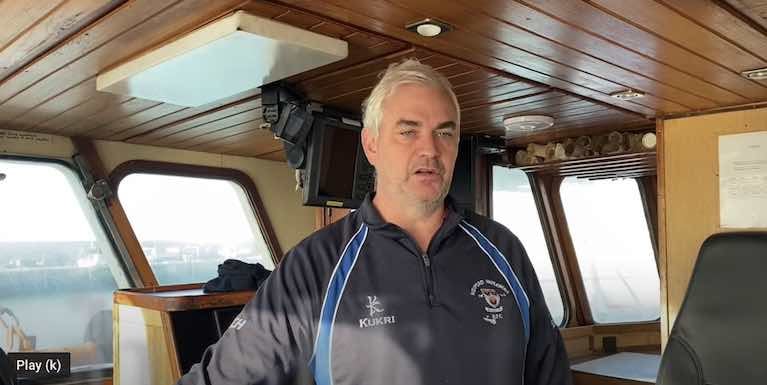As efforts continue to agree a final Brexit deal, two Wexford fishermen have outlined on RTÉ Radio Countrywide how devastating loss of access to British waters will be.
British prime minister Boris Johnson met European Commission president Ursula von der Leyen on Saturday in an attempt to break a deadlock reached late last week on three issues - fisheries, fair trade and dispute resolution.
EU chief negotiator Michel Barnier and British lead negotiator David Frost are due to resume their talks in Brussels today, and Ms Von der Leyen and Mr Johnson have agreed to speak again on Monday evening.
“Brexit is going to affect every port and harbour where fishing is the lifeblood of communities,” Will Bates (43), a third-generation fisherman from the Co Wexford port told RTÉ Radio Countrywide.
Bates, whose grandfather also ran the ferry to the Saltee islands bird colony, said quotas in Irish waters were not enough to sustain him and many other Irish vessels.
Return of all British quotas
Former Bord Iascaigh Mhara (BIM) technologist Dr Peter Tyndall has said that Ireland should be ensuring that it secures return of all British quotas previously held in Irish waters.
This would provide some recompense for loss of an area that represents some 34 per cent of total Irish landings annually, Dr Tyndall said, pointing out the current situation highlighted the consequences of a poor deal secured by Ireland in the original Common Fisheries Policy.
Fishing time in British waters
Speaking to RTÉ Radio after returning from scallop fishing in Cardigan Bay off the Welsh coast, Mr Bates estimated that he spends 60 per cent of his fishing time in British waters.
Kilmore Quay also has a prawn fleet which risks losing access to the Smalls basin – one of only two substantial prawn grounds, the other being the Porcupine Basin off the west coast.
Fellow Wexford fisherman Seamus Molloy (45), from Piercetown, pointed out that while Ireland has ten per cent of total EU waters on paper, rich spawning grounds make it far more significant in practice.
“After Britain leaves, we will have 15 per cent of EU waters, but we have 30 per cent of fishable waters, because Spain and Portugal have fished out their inshore areas,” Mr Molloy said.
Molloy and Bates said they feared Irish stocks were being used as a bargaining tool, where EU fleets excluded from British waters would be allocated extra catch off the Irish coast.
“Ireland has the resource which the other states lack,” they said.
The Kilmore Quay community worked with Sean Moroney on a film posted last month on YouTube which also outlines their concerns.
A week ago, British negotiator Lord David Frost rejected an EU offer to hand back 18 per cent of fishing quotas.
Britain is seeking 80 per cent, and there were reports that EU chief negotiator Michel Barnier had offered a compromise of 60 per cent.
France confirmed on Friday that it would veto a deal if it was not satisfied with it, while Mr Johnson was warned by Eurosceptic Tory MPs not to give any more ground.
The Daily Telegraph reported that both sides thought a deal was close on Thursday, with Britain allowing the EU to keep almost 50 per cent of its current quotas at the beginning of a multi-year transitional period, after which Britain would allocate quotas on an annual basis.
However, the newspaper said the stalemate arose when the EU then demanded "total access" to British waters for 10 years and also reverted to its original offer of giving back just 18 per cent of its current quotas to Britain.
Hear the full RTE Radio Countrywide interview with the Kilmore Quay skipper here
And watch the YouTube video:































































